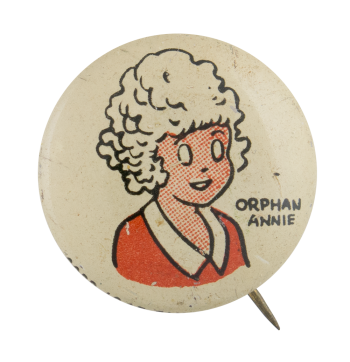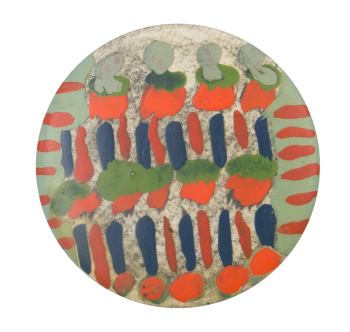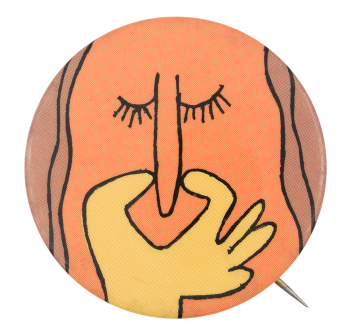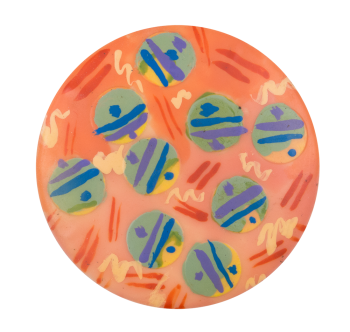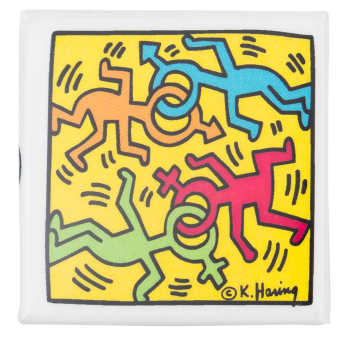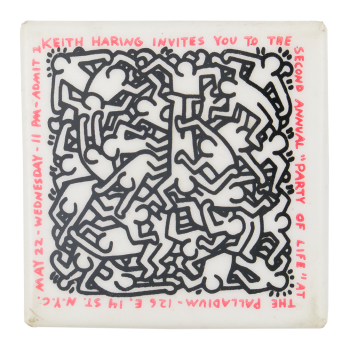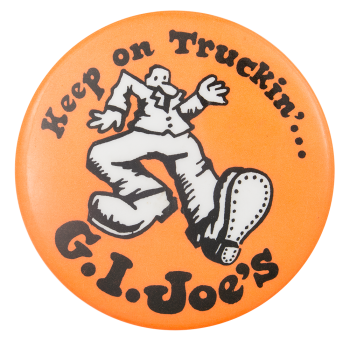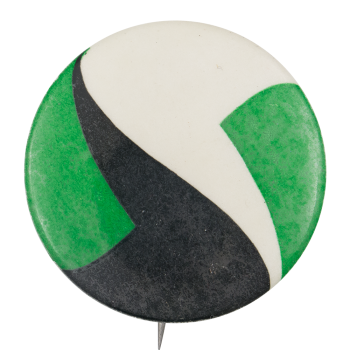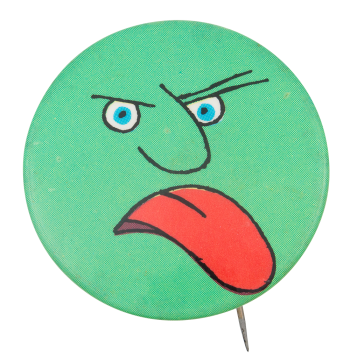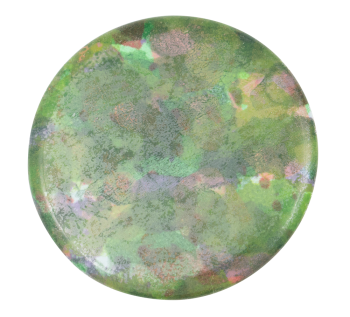Kellogg's Pep Orphan Annie
| Category | |
|---|---|
| Additional Images | |
| Sub Categories | |
| Text on Button | Orphan Annie |
| Image Description | Illustration of a young girl in a red dress with white hair and large white eyes on a white background with black text in the lower right corner. |
| Back Paper / Back Info |
Kellogg's PEP |
| Curl Text | COPR. 1945 FAMOUS ARTISTS SYN. |
| Back Style | |
| The Shape | |
| The Size | |
| Year / Decade Made | |
| Additional Information | One of a series of 86 different comic character buttons issued by Kellogg's and given away with PEP cereal between 1945-1947. Other characters in the series included Dick Tracy, Popeye and Felix the Cat. Little Orphan Annie was a daily American comic strip created by Harold Gray that was first published in 1924 and ran until 2010. The comic featured the adventures of Annie, the little red-haired orphan, and her dog, Sandy. |
| Sources |
Hake's - KELLOGG'S PEP COMPLETE PREMIUM COMIC CHARACTER BUTTON SET OF 86. (2020). Retrieved 9 October 2020, from http://www.hakes.com/item.asp?Auction=209&ItemNo=122362 Kellogg's Pep Pins. (2020). Retrieved 9 October 2020, from http://www.marklansdown.com/pinbacks/pages/kelloggspep.html |
| Catalog ID | AD0111 |

